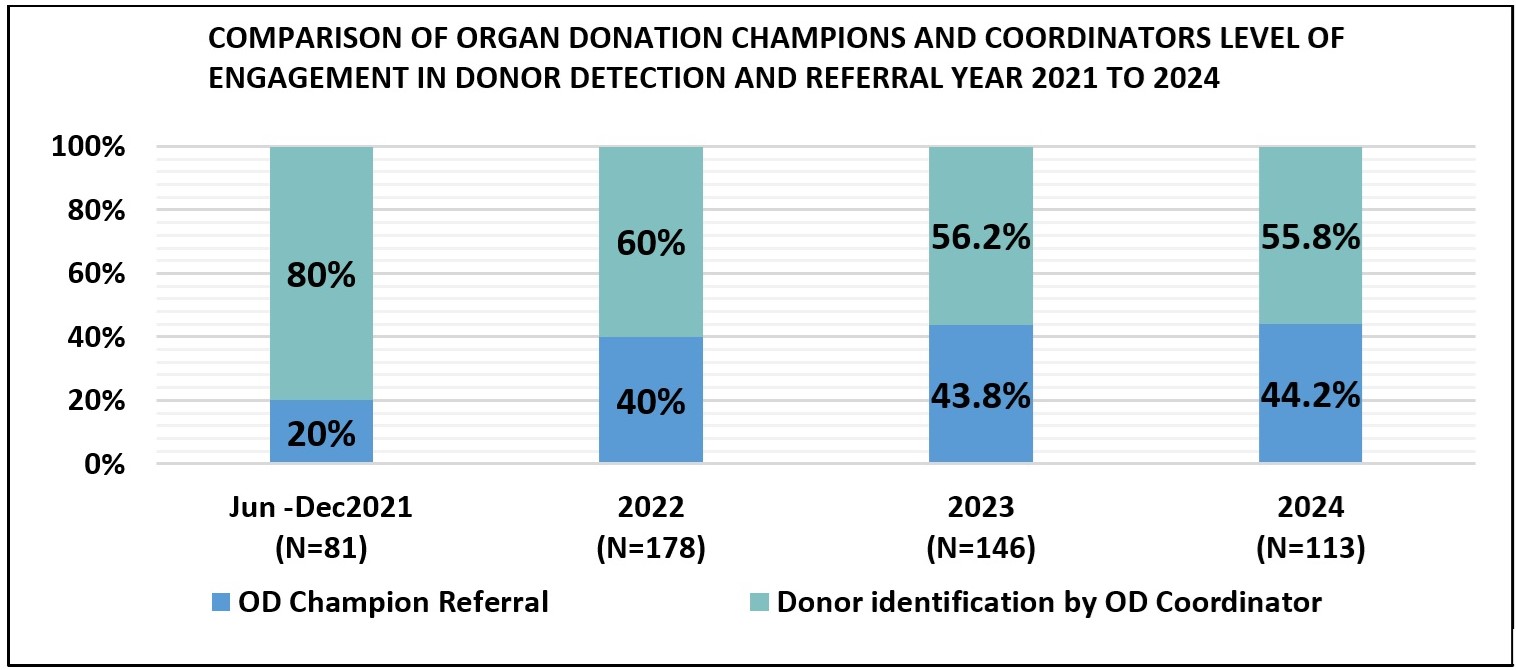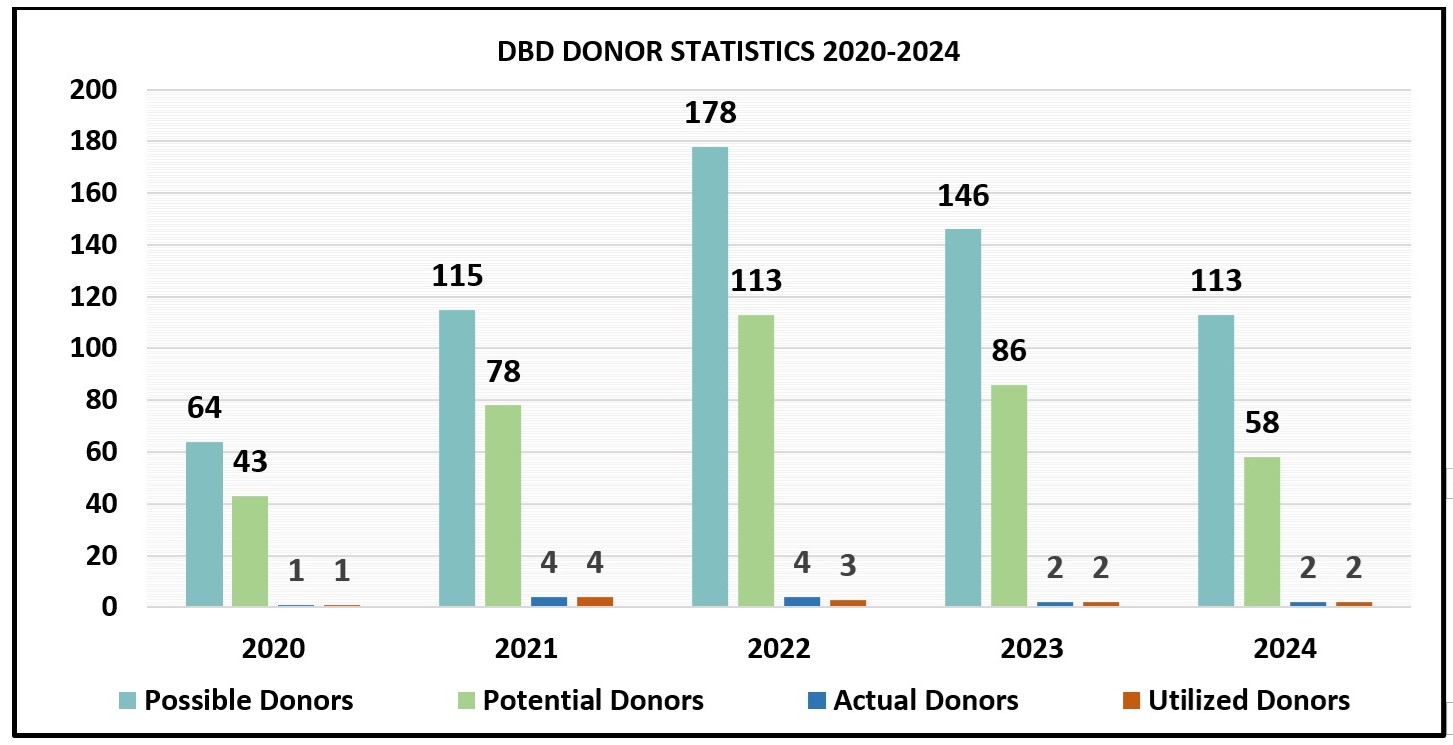Enhancing donor detection and referral: Insights from Tawam Hospital's critical care support unit, Al Ain, United Arab Emirates
Jocelyn Gundan1,3,4, Mareena Jaise Kunnath1,4, Theresa Coelho1,2,4, Emily Semira1,3, Sylvia George1,4.
1Nursing Department/CCM, Tawam Hospital, Al Ain, United Arab Emirates; 2Nursing and Midwifery Education and Research Department, Tawam Hospital and Shaikh Tahnoon Bin Mohammed Medical City, Al Ain, United Arab Emirates; 3Pediatric Intensive Care Unit, Tawam Hospital, Al Ain, United Arab Emirates; 4Intensive Care Unit, Tawam Hospital, Al Ain, United Arab Emirates
Organ Donation Coordinators and Champions.
Introduction: Tawam Hospital has been involved in organ donation since September 2019. Though there are SOPs and policies established to guide the process of organ donation, there was no clear data on critical care support staff engagement until May 2021. To improve this, strategies were implemented to enhance donor detection and referral, making it a shared responsibility between Organ Donation (OD) Champions and Coordinators.
Method: A retrospective analysis of donor referral data was conducted, focusing in June 2021 to December 2024 registry as the term of interest. Since June 2021, the detection and referral of possible and potential donors made by the OD Champions were documented in Deceased Alert System (DAS). In September 2021, the OD Notification System for Coordinators was introduced. Monitoring the message center pool of EMR was included in the strategies. In March 2022, the Backup Coordinator Protocol was implemented after the education sessions were conducted by the OD Coordinators and CNE. The active deceased donor detection continued by conducting systemic rounds in donor pool source units. Monthly donor statistics were analysed, including the type of referral used to communicate with OD Coordinators.
Results: A marked increase in detection and referral was observed in year 2022 with the level of engagement of 40% compared to 20% in 2021. In 2023, the level of engagement of OD Champions marked 43.8%. Out of 146 detected possible and potential cases, 64 cases were identified by OD Champions. The quality management audits conducted in December 2024 documented 50 referrals, and the referral rate increased to 44.2%. Additionally, desired directions were maintained in the KPI for identifying all possible donors in the ICU and referring of potential deceased brain death donors.

The use of OD Notification System in EMR was not substantial as the OD Coordinators continued to review the patient files and deceased list manually. There were no changes in conducting systemic rounds in the donor pool source units apart from joining the huddle of ICU/PICU physicians. The group message tool served as the main port in sending the referral of OD Champions to OD Coordinators. Main impact rely on the implementation of Back up Coordinator Protocol. Thus, this strategy remains an essential part of the process.

Conclusion: Optimizing the donor detection and referral process relies on a strong collaborative approach between the Organ Donation (OD) Champions and Coordinators. Implementing multiple targeted strategies is essential to accelerate the turnaround time (TAT) of donor detection and referrals. Sustained clinical support-particularly through ongoing education and training-is critical to maintaining high level of engagements and effectiveness across all members of organ donation team.
[1] donor detection
[2] donor referral
[3] critical care support staff
[4] organ donation champions
[5] organ donation coordinators
[6] deceased brain death (DBD) donors
[7] referral turnaround time (TAT)